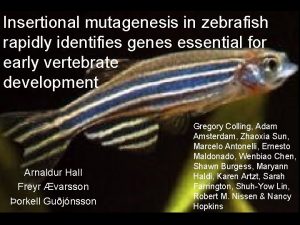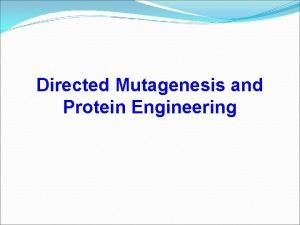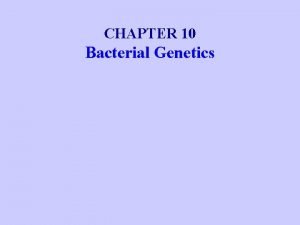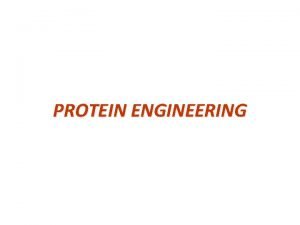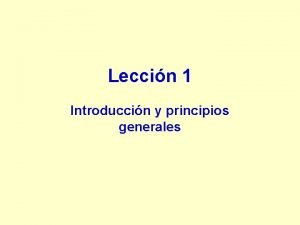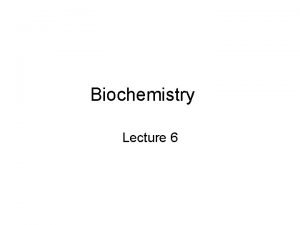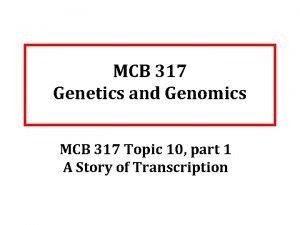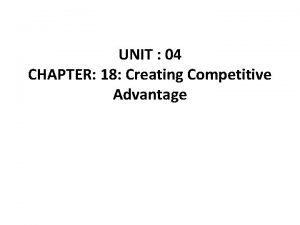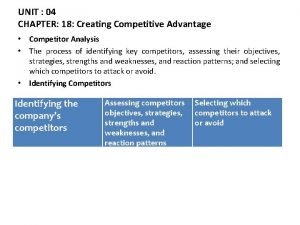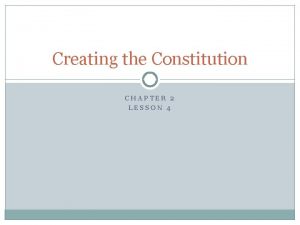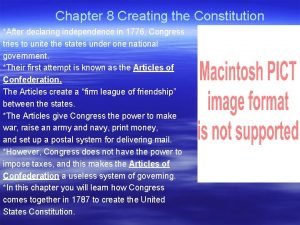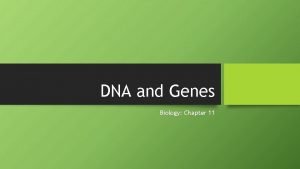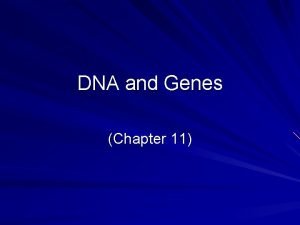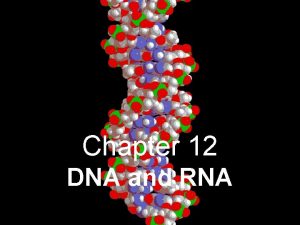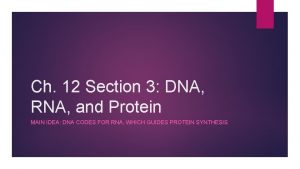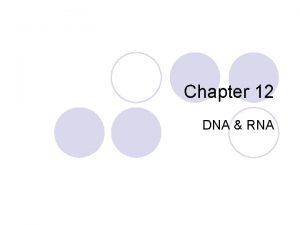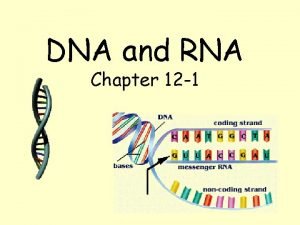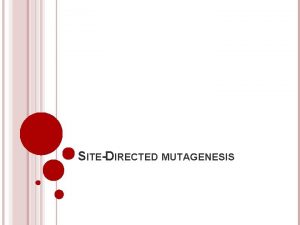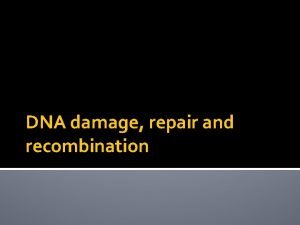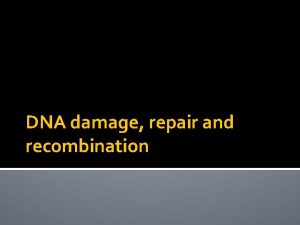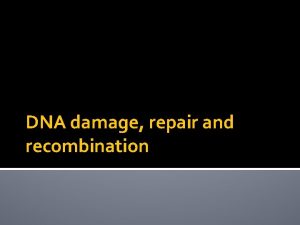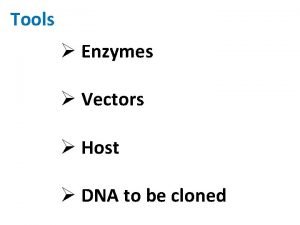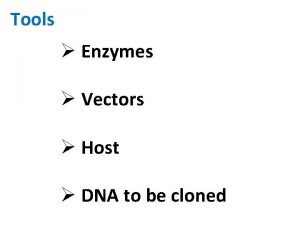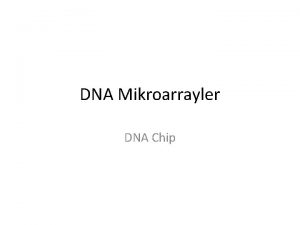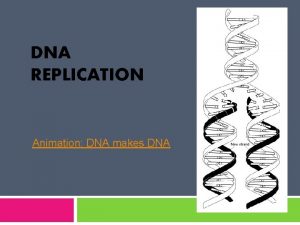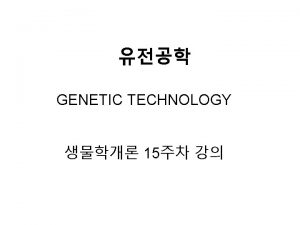Chapter 8 Mutagenesis of cloned DNA To creating































- Slides: 31

Chapter 8 Mutagenesis of cloned DNA

To creating numerous mutations in a small DNA sequence, • mutagenesis with degenerate oligonucleotides • a palindromic RE recognition sequence at the 3’ end of the oligonucleotide for the mutual priming reaction ( 230 C for 1 hr).



To synthesize a desired sequence, • assembly of target sequences using mutually priming long oligonucleotides • use pairs of long oligonucleotides ( � 100 nucleotides) • can generate desired sequences up to 400 bp in a single step • a 15 -bp duplex is a conventional length for mutual priming


Random mutagenesis by PCR (error-prone PCR, EP-PCR), • • use low fidelity of Taq DNA polymerase add Mn+2 increase Mg+2 concentration use unequal d. NTP concentrations




PCR cycles vs PCR doublings Each PCR cycle generally increases the amount of DNA by a factor of 1. 7 to 1. 9 until the DNA concentration reaches a plateau (generally 5 to 50 ng/μl), and then stop increasing altogether.

If mutagenesis of a library of sequences, To avoid loss of complexity, 1. Four EP-PCR cycles are performed at a higher template concentration. 2. 10% of the product is then transferred to a fresh EP-PCR tubes as template, for another four EP -PCR cycles. 3. Repeat the process, until the desired number of doublings is achieved.

Linker-scanning mutagenesis of DNA 1. Bal 31 and linkers to generate serious deletion plasmids 2. Determine the deletion endpoints by sequencing 3. Ligation of backbone fragments, hybridized oligonucleotides, and the deleted fragments.


Directed mutagenesis by PCR

(I ). Introduction of restriction endonuclease sites by PCR





(II). Introduction of point mutations by PCR



(III). Introduction of a point mutation by sequential PCR steps



Transpososome mutagenesis (Epicentre Co. )

(I). Mutagenesis of target clone


(II). Random mutagenesis of bacteria in vivo (to generate mutants)

 Insertional mutagenesis
Insertional mutagenesis Insertional mutagenesis
Insertional mutagenesis Directed mutagenesis and protein engineering
Directed mutagenesis and protein engineering Mutagenesis definition biology
Mutagenesis definition biology Gene shuffling
Gene shuffling Mutagénesis dirigida
Mutagénesis dirigida Glycosidic bond
Glycosidic bond Site directed mutagenesis
Site directed mutagenesis Dna polymerase function in dna replication
Dna polymerase function in dna replication Bioflix activity dna replication nucleotide pairing
Bioflix activity dna replication nucleotide pairing Coding dna and non coding dna
Coding dna and non coding dna What role does dna polymerase play in copying dna?
What role does dna polymerase play in copying dna? Dna rna protein synthesis homework #2 dna replication
Dna rna protein synthesis homework #2 dna replication Value creation strategy
Value creation strategy Chapter 18 creating competitive advantage
Chapter 18 creating competitive advantage Constitutional convention definition
Constitutional convention definition Lesson 4 creating the constitution answer key
Lesson 4 creating the constitution answer key Chapter 18 creating competitive advantage
Chapter 18 creating competitive advantage Tci chapter 6 answers
Tci chapter 6 answers Chapter 6 creating a nation
Chapter 6 creating a nation Chapter 6 creating a nation
Chapter 6 creating a nation Chapter 18 creating competitive advantage
Chapter 18 creating competitive advantage Chapter 8 creating the constitution
Chapter 8 creating the constitution Chapter 12 section 1 dna the genetic material
Chapter 12 section 1 dna the genetic material Chapter 11 dna and genes
Chapter 11 dna and genes Chapter 12 section 1 molecular genetics answer key
Chapter 12 section 1 molecular genetics answer key Dna and genes chapter 11
Dna and genes chapter 11 Chapter 12 molecular genetics
Chapter 12 molecular genetics Chapter 12 dna and rna
Chapter 12 dna and rna Chapter 12 section 3 dna rna and protein
Chapter 12 section 3 dna rna and protein Chapter grabber
Chapter grabber Chapter 12 dna the genetic material
Chapter 12 dna the genetic material
